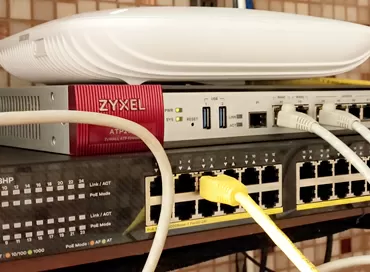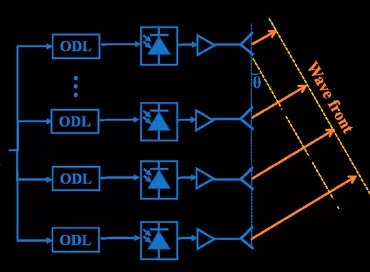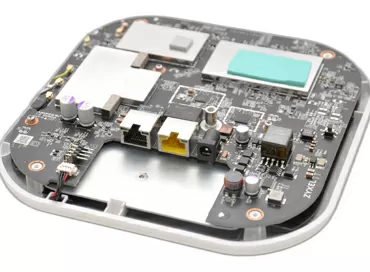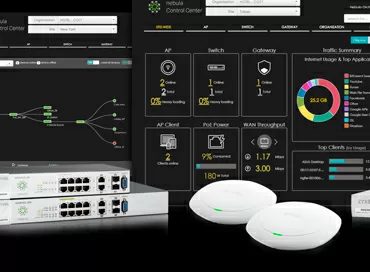What's new in Wi-Fi 7
Wi-Fi 7 or 802.11be is the next Wi-Fi standard that the Institute of Electrical and Electronics Engineers (IEEE) is working on, which promises to raise the speed to a whopping 46 Gbps, which is almost five times faster than Wi-Fi 6, and also reduce data transmission delays. Wi-Fi 7 is expected to provide higher RF spectrum utilization efficiency, higher energy efficiency, better interference suppression, higher bandwidth density and additional cost reduction. When it seemed that IEEE engineers had exhausted all the ways to improve Wi-Fi, they proposed several new improvements and methods that provide not just a gradual increase, but also a significant jump in performance and a reduction in delays. That's what it's about.
Doubled channel width
Wi-Fi 7 increases the maximum channel size from 160 MHz to 320 MHz, which immediately doubles the bandwidth. The Wi-Fi 7 standard can also work either on two sets of channels with a width of 160 MHz, or on one channel with a width of 320 MHz, depending on the requirements of the application.
Doubled number of spatial MU-MIMO flows
Wi-Fi 7 increases the number of spatial streams from 8 to 16, which also doubles the bandwidth. Multi-user technology with multiple inputs and multiple outputs (MU-MIMO) splits the available bandwidth into separate streams that use the connection equally. MU-MIMO reduces the congestion associated with simultaneous attempts by multiple endpoints to access the wireless network. In addition, MU-MIMO supports bidirectional functionality, so the router can receive and send data at the same time.
Quadruple QAM modulation
An increase in quadratic amplitude modulation (QAM) from 1024-QAM to 4096-QAM is expected to provide an additional 20% increase in throughput. Thus, we get from 9.6 Gbps in Wi-Fi 6 to 46 Gbps in Wi-Fi 7.
Simultaneous operation in multiple ranges (MLO)
With MLO, devices can simultaneously transmit and receive data in all available bands (2.4GHz, 5 GHz and 6 GHz) and channels. This improves performance, reduces waiting time and increases the reliability of information transmission. Data streams can be pre-assigned to specific channels depending on the requirements of the application or device, especially in IoT environments. The network can also be configured to dynamically select the frequency band with the lowest load in real time and transmit data over this channel.
Working with multiple access points
In previous Wi-Fi standards, each access point acted independently in terms of receiving connection requests from end devices and broadcasting traffic back and forth to that endpoint. Working with multiple access points creates a mesh-type configuration in which neighboring access points can work in coordination with each other to improve the use of the radio frequency range. Working with multiple access points can be programmed in such a way that a set of access points forms a subsystem in which access and data transmission for end devices can be strictly regulated.
Real-time Data Transmission Network (TSN)
Технология TSN, первоначально разработанная для уменьшения буферизации и задержек в сетях Ethernet, использует временные отрезки для обеспечения надежной доставки пакетов для приложений реального времени, таких как IoT или IIOT.
Simultaneous use of resource units (Multi-RU)
OFDMA (Orthogonal Frequency Division Multiple Access) allows access points to interact with multiple clients simultaneously by assigning resource units to individual clients. Multi-RU increases the efficiency of using the radio frequency spectrum, ensuring that traffic does not interfere with congested channels.
Deterministic low latency
The combination of the technologies mentioned above will reduce latency so that Wi-Fi 7 can support real-time applications such as AR/VR and IoT. The delay will not exceed a certain limit, which is important in some industrial automation applications that cannot tolerate large latency deviations.
Advantages of Wi-Fi 7
Although today Wi-Fi 5 (802.11ac) capabilities may be sufficient for all but the most bandwidth-demanding applications, it is assumed that the load on wireless traffic will continue to grow over time, especially as enterprise infrastructures are upgraded.
Business processes that were once performed manually are moving into the digital world, especially in the cloud. The amount of data that needs to be moved wirelessly is growing exponentially.
Digital transformation doesn't just mean that end users who performed a certain function with a paper document are now performing that function with a digital copy. Business processes are becoming more complex and interconnected. Data moves through hybrid cloud environments. A specific business function can span multiple applications. Analytics that require large amounts of data is becoming more common in the enterprise. Video collaboration platforms have become the norm.
Wi-Fi 7 is designed to transmit large volumes of traffic, as well as to support specific applications that require low latency, high reliability and quality of service. These may include industrial automation, video surveillance, remote control, augmented and virtual reality, as well as video applications. In addition, Wi-Fi 7 and 5G will work together in edge computing scenarios, cloud architectures and private wireless networks.
Will Wi-Fi 7 replace Ethernet?
In certain specific situations, Wi-Fi 7 can replace wired Ethernet, which will really change the rules of the game. For example: a fully wireless, completely disconnected office, especially in the new environment, where IT staff will not have to stretch wires to the ceiling or lay cables to each office or office space.
While the maximum theoretical speed of Wi-Fi 7 is 46 Gbps, according to some estimates, the real speed is much lower - about 6 Gbps, which is still significantly faster than gigabit Ethernet.
Of course, in wireless networks, bandwidth is distributed between endpoints, while Gigabit Ethernet can deliver dedicated gigabit links to each endpoint, so this is another variable to consider. Again, wireless networks can use multiple antennas and multiple streams, and Wi-Fi 7 is designed to allow multiple access points to be combined, so at least analyzing its actual performance in your environment is extremely difficult.
Since many IT departments have already added a wireless network on top of a pre-existing Ethernet LAN to support employee mobility, Wi-Fi and Ethernet can coexist in a scenario in which Wi-Fi is the primary network and Ethernet remains as a backup.
According to Dell'Oro group, the supply of 400-Gigabit Ethernet equipment (cables, switches) doubled in 2021. And the Ethernet roadmap envisions reaching speeds of 800G or even 1 Tbit/s by 2030. Thus, Wi-Fi can compete with Ethernet at the access level, but Ethernet remains firmly anchored in both enterprise and hyperscale data centers.
Since standards-compliant Wi-Fi 7 is expected to arrive just three years after Wi-Fi 6E, organizations need to carefully examine their upgrade cycles to determine the upgrade path: if we use Wi-Fi 5, should we upgrade to Wi-Fi 6, to Wi-Fi 6E, or wait for Wi-Fi 7? If we have already switched to Wi-Fi 6, should we stick with it and switch to Wi-Fi 7 only if and when a critical business need arises?
According to IDC's analysis of the corporate WLAN market for 2021, Wi-Fi 6 accounted for 60% of the total shipped devices, while Wi-Fi 5 sales accounted for most of the rest, which means that many companies have committed to Wi-Fi 6, and many others are still they are building up their Wi-Fi 5 networks.
The road to Wi-Fi 7
The Wi-Fi 7 standard is just the latest in a long line of Wi-Fi standards that are gradually providing a faster, safer and more reliable wireless network. Here is a brief description of the last few.
Wi-Fi 5
The Wi-Fi 5 standard, adopted in 2014, reaches a maximum speed of 3.5 Gbps and is certainly sufficient for home networks, branches and many corporate scenarios.
Wi-Fi 6
Certified by the Wi-Fi Alliance in 2019, Wi-Fi 6 provides a maximum theoretical bandwidth of 9.6 Gbps and is designed for dense environments such as stadiums, shopping malls and large offices. It can also be effectively deployed in IoT environments.
Wi-Fi 6E
Changes to Wi-Fi 6 from 2021, adopted as the Wi-Fi 6E standard, provide the same speed, but uses previously unavailable wireless spectrum in the 6 GHz band (for the USA). The Wi-Fi 6E standard is designed for new scenarios such as virtual or augmented reality and 8G video broadcasts.
Ron Amadeo
17/07.2022













